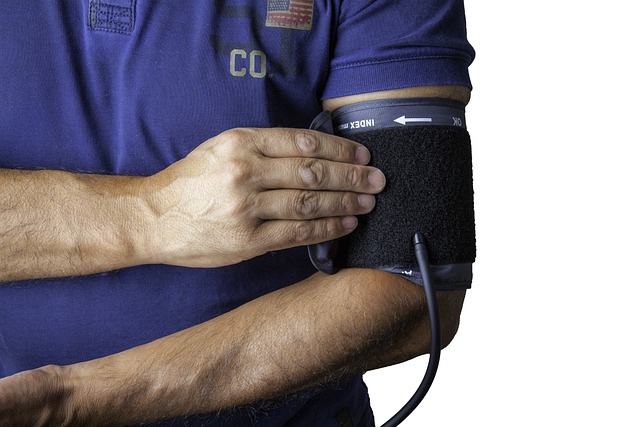
Pathways to Health Communtiy Health Fair Northcarolina
Health fairs are interfaces of mobilized citizens, institutions, and other actors with the health and well-being of the community. With knowledge tools and information now being set forth to the public at large, there will be healthier lives through Pathways to Health and that is just a few examples. A very well-conceptualised health fair will therefore have a great impact on the nature in which health needs are being addressed within the community.
Among the programs of Pathways to Health, one of the most general descriptions of an effective North Carolina community health fair is shown below:
- Background of Pathways to Health and Community Health Fairs
These Pathways to Health programs, therefore will give to the people opportunities and choices on healthy sustaining environment. Underlining features of these programs, therefore will be prevention, education, and accessibility. These are stated thus translated into better community health by enabling equity in disparities of health.
North Carolina has pretty heterogenic populations both in the urban as well as in the rural areas and health fairs are fairly in great demand. In such a scenario, targeted community interventions are particularly crucial because of states’ demographic, socioeconomic, and geographic diversity.
- Objectives of a Community Health Fair
The major objectives of a health fair include,
Health Education: Teach people about chronic diseases; diabetes, hypertension, and obesity.
Preventive Care: Screening for blood pressure, cholesterol, glucose etc .
Resource Linkage: Connecting residents with local health providers and social services, wellness programs
Community Empowerment: Empower the residents by letting them participate in all the decisions of health
The events of such a type evokes North Carolina state connection, and in this case, rural areas which are usually left devastated with accessing health service delivery .

- Event Planning and Organization
a. Needs Assessment Community
This is through a community health assessment, which of course also itself enables the conducting of CHAs by North Carolina’s DHHS periodically; this therefore is often structured to be encompassed in order to serve as a model of local health issues where concerns about mental health and access to primary care also are expected to be encompassed.
. Site
Accessible and accessible to the community: schools, community centers or parks. Convenient in North Carolina are public libraries and faith-based organizations.
c. Coalitions Building
This can be an all-inclusive package that addresses all health departments, hospitals, nonprofits, and universities. Membership association with the North Carolina Medical Society or chapter association with local branches of the YMCA and other institutions can further scale fair participation for some of the groups listed above.
d. Volunteers and Staff
During the event will be the Practitioners, students, and residents. This will come from different nursing groups in North Carolina and medicine training. - Health Fair Features
a. Screening. Free or low fee screening has been one of the principal reasons why people attend the event. Some of them are;
Blood pressure screening
Diabetes screening
Eye and ear screening
Dental Check-up
b. information forums
Some of the topics for the hands-on discussions include;
Nutrition and Food Services
Stress Management and mindfulness activities
Exercise Classes, including yoga or chair aerobics
Substance Abuse Prevention- a North Carolina cause célèbre
c. Immunization Clinics
Flu shots, COVID-19 vaccinations and all the rest in that category will end as a public health
d. Mental Health Resources
Mental health is not going to get much better in North Carolina. Anything less than that is rural. Free consultations, resources on managing stress, and where to find therapy are gold to the residents.
. Child and Family Services
Hosting child development screenings, car seat inspections, parenting classes are but a few to facilitate an environment to foster family participation. - Technology and Innovation
a. Telehealth Demos
Telehealth resources are especially well-suited in that the target population groups to be addressed reside in rural North Carolina where health care would not always be within easy reach.
b. Cyber Resources
Health education, event planning and resources available through an application or QR codes
c. Data Collection
Questionnaires administered during the planning stage of the fair would remain anonymous to get long term care needs of the community - Cultural Competence and Inclusiveness
North Carolina state have cultures regarding population in that matter. North Carolina state has populations like African American, Hispanic, and Native American. To become culturally competent and inclusive :
Materials will be provided in more than one language.
Health beliefs and practices that may seem culturally-meaningful should be highlighted .
Citizens should be engaged in developing and implementing the interventions . - Challenges Mitigation .
a. Finance
Appeal Grants, sponsorships, donation from local organizations and agencies like Blue Cross Blue Shield of North Carolina Foundation can be applied to reduce the cost Access Ease of access to an ADA compliant venue with public transport increase participation where the venue is ADA compliant.
c. Outreach
Complete involvement through social media, local radios, posting boards. 8. North Carolina Successful Programs
a. NC Fit Together Campaign
Besides the events, it is the fairs that take the war to the rising case of obesity.
Sports and balanced dieting are promoted in this message.
ba. FaithHealthNC
FaithHealthNC, or rather, the coalition of faith communities and disadvantaged groups to promote healthier health care can best be covered under the head of health with fairs.
cab. Mission Health’s Mobile Screening Unit
This sub-unit was from Asheville and brought health care to the country sometimes teaming up with community fairs for walk-in screenings meet the clients . - Outcome Assessment
Surveys to be carried out after the event and later on to the viewers would always be a sure way of rating the success of the health fair. Other evaluation measures could further include:
Number of shows carried out
Number of referrals made to health care providers
Satisfaction level of the participants
Availability of Health care resources at the community - Long-term Impacts
A community health fair is something more towards a healthier community through awareness, preventive care, and availability of resources. And over a period of time, repeat events contribute to such things as:
Incidence of preventable diseases at reduced number
Health literacy
Strong networks in the community
And so, therefore, there would be such activities with North Carolina because it would impact health disparities in the state at a state level, more on a rural and least served one.

